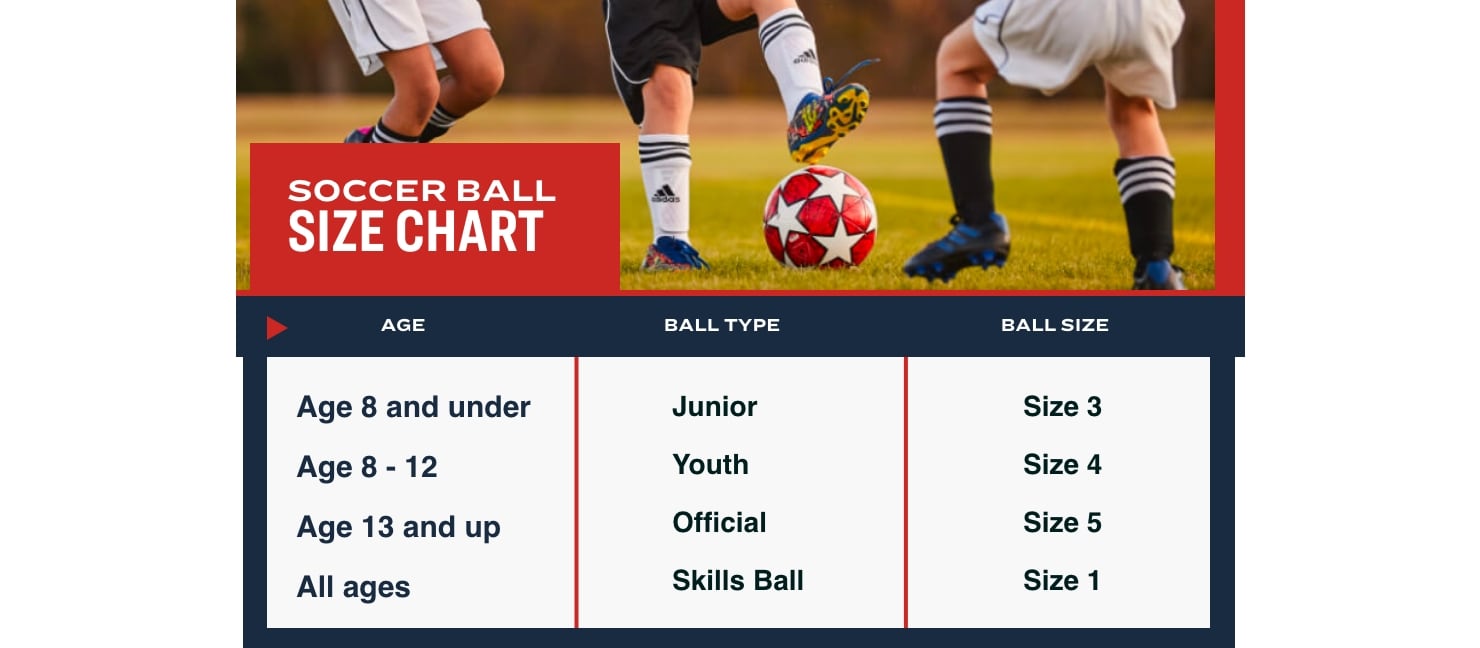How to Choose the Right Soccer Ball Size by Age

The big green is calling, but, if you (or your soon-to-be soccer star) are new to the field, what will you need to answer the call? While soccer clothing, cleats, and training equipment may already be a given, the most essential part of the game is the right size soccer ball for the job. The size of each ball is important for the way you or your little one will practice and play. Even if you are new to the game or have been playing and coaching soccer for years, here are some tips to be mindful about when shopping for soccer balls, including their size and weight, and which are right for yourself or your little one.
What Are Soccer Ball Sizes?
Using balls with the right sizes for practice or play might seem trivial at first, but it is important to understand why soccer balls have sizes – based typically on inches and weight – and why practicing and playing with the right size is necessary.Soccer balls are designed to fit the age and skill level of the players using them. For example, younger players should use soccer balls that are smaller and more lightweight for increased ball control. This also helps them avoid damaging their muscle development. Players 12 and up should utilize larger and heavier soccer balls to ensure their skills and more developed physical talents are being challenged and strengthened whenever they take the field.
What is the Difference Between Soccer Ball Sizes?
The governing body of international football or soccer, better known as FIFA, creates the standards for adult and youth soccer ball sizes. Each standard maximizes skill growth and efficiency of play as follows:Size 1 soccer balls (otherwise known as skills balls) are the smallest size for players of all ages. These balls are often between 18 to 20 inches in circumference or less. This ball is frequently used as an introductory soccer ball for kids; however, some adult players like to develop their foot skills with them as well. Their small size makes them best utilized as toys for toddlers and preschoolers or promotional giveaway swag.
Size 3 (junior balls) begin the sizing for balls that can be used during live games and matches. Designed for ages 5 to 8 and measuring between 23 to 24 inches in circumference and 300 to 320 grams in weight, these balls are ideal for game days, but are also appropriate during practices for players over the age of 8.Size 4 (youth soccer balls) are the next size after size 3 balls. The size 4 soccer ball is ideal for players 8 to 12 years of age. Weighing in at 350 to 390 grams with a 25 to 26-inch circumference, this size ball helps players develop control and transition from beginners to more experienced players.

Utilizing correctly sized soccer balls promotes safety, helps enhance proper development, and overall improves players’ skills and talents on the field.
FREQUENTLY ASKED QUESTIONS
What is the Right Inflation for a Soccer Ball?
In addition to
the ball sizing system, FIFA also provides the regulations for the proper inflation
pressure of soccer balls.
Underinflated soccer balls do not travel as straight, go as far, and lose their speed. Conversely, overinflated balls can be more difficult to kick and can even lead to injury. FIFA rules state inflation for balls must be between 8.5 psi and 15.6 psi. Find ball pumps and other soccer accessories at Academy Sports + Outdoors. Shop Academy for all your soccer gear, including balls and other essentials to help you or your little one dominate the pitch this upcoming season.


